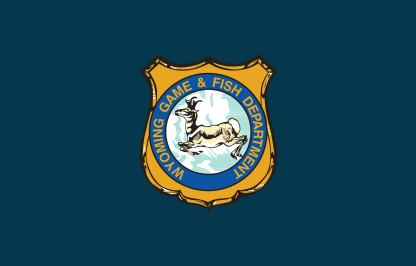Photo by Department of Environmental Quality.
The Wyoming Department of Health has notified the Forest Service of a potential harmful cyanobacterial bloom (HCB - also known as harmful algal blooms) on Shoshone Lake, Washakie Ranger District.
According to Steve Schacht, Washakie District Ranger, further samples will be collected at the lake on Friday and results should be back later next week. “We wanted to be proactive in our communication of the harmful effects of this bloom.”
HCBs are dense concentrations of cyanobacteria or blue-green algae that pose a health risk to humans, pets, livestock, wildlife and aquatic life. Under normal conditions, cyanobacteria are present at low levels and play an important role in aquatic ecosystems. When blooms occur, cyanobacteria become visibly abundant and can look like grass clippings, blue-green scum, or spilled paint on the water surface. HCBs may also be found suspended in the water column and make the water appear green. Cyanobacteria can produce toxins and other irritants that can cause health effects such as rashes, fatigue, disorientation and gastrointestinal illnesses. In extreme cases, toxins may lead to pet, livestock or wildlife death.
Awareness of harmful cyanobacterial blooms has become more widespread across Wyoming in recent years. Anglers and other recreationists are urged to avoid contact with the water in areas where scum is visible. Other safety tips include:
- Do not ingest water from the bloom. Boiling, filtration and/or other treatments will not remove toxins.
- Rinse fish with clean water and eat only the fillet portion.
- Avoid water spray from the bloom.
- Do not allow pets or livestock to drink water near the bloom, eat bloom material or lick fur after contact.
- If people, pets or livestock come into contact with a bloom, rinse off with clean water as soon as possible and contact a doctor or veterinarian.
For resources and information on HCBs in Wyoming, visit WyoHCBs.org.
Another exapmle of what HCB's look like, photo by Department of Environmental Quality:


